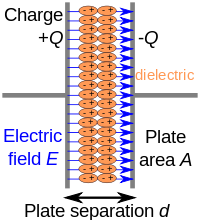
Photo from wikipedia
Several cellular activities, such as directed cell migration, are coordinated by an intricate network of biochemical reactions which lead to a polarised state of the cell, in which cellular symmetry… Click to show full abstract
Several cellular activities, such as directed cell migration, are coordinated by an intricate network of biochemical reactions which lead to a polarised state of the cell, in which cellular symmetry is broken, causing the cell to have a well defined front and back. Recent work on balancing biological complexity with mathematical tractability resulted in the proposal and formulation of a famous minimal model for cell polarisation, known as the wave pinning model. In this study, we present a three-dimensional generalisation of this mathematical framework through the maturing theory of coupled bulk-surface semilinear partial differential equations in which protein compartmentalisation becomes natural. We show how a local perturbation over the surface can trigger propagating reactions, eventually stopped in a stable profile by the interplay with the bulk component. We describe the behavior of the model through asymptotic and local perturbation analysis, in which the role of the geometry is investigated. The bulk-surface finite element method is used to generate numerical simulations over simple and complex geometries, which confirm our analysis, showing pattern formation due to propagation and pinning dynamics. The generality of our mathematical and computational framework allows to study more complex biochemical reactions and biomechanical properties associated with cell polarisation in multi-dimensions.
Journal Title: Journal of theoretical biology
Year Published: 2018
Link to full text (if available)
Share on Social Media: Sign Up to like & get
recommendations!